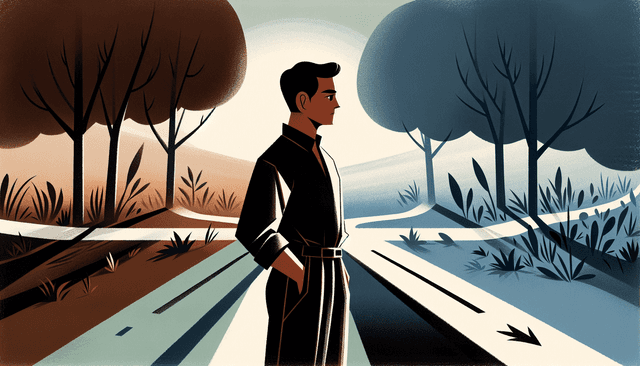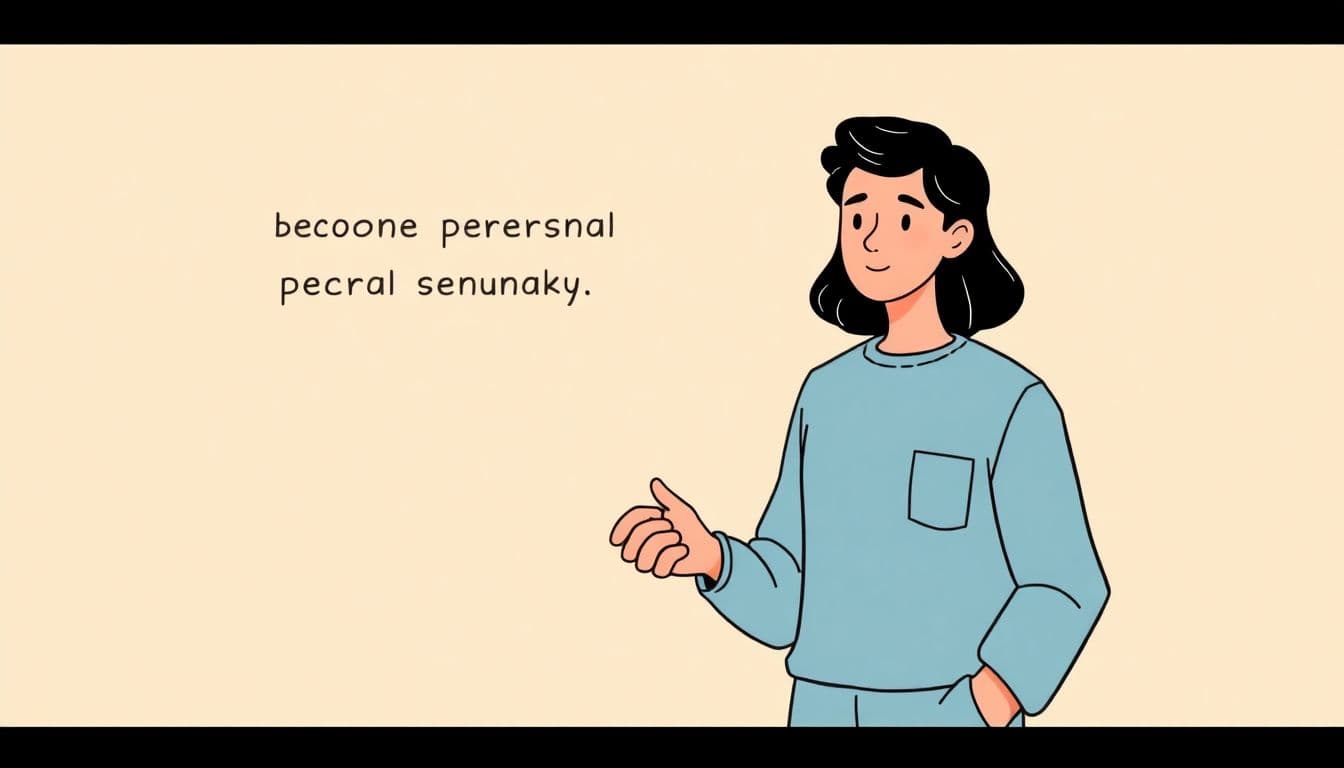Table of Contents
Understanding character arcs can sometimes feel like deciphering a secret code. It’s normal to wonder how a character can evolve throughout a story, and why it even matters. After all, who doesn’t love a good transformation from villain to hero or the classic coming-of-age tale?
But don’t worry! If you stick around, I promise to break down the concept of character arcs in simple terms. Together, we’ll explore different types, how they shape stories, and what makes them compelling.
By the end, you’ll have a solid grasp on character arcs and even learn how to create your own! So, let’s dive in and discover the magic behind these fascinating journeys!
Key Takeaways
- Character arcs are the journeys characters take, showing their growth or change throughout the story.
- There are three main types of arcs: positive (growth), negative (decline), and flat (unchanged).
- A strong character arc enhances reader engagement, making stories memorable and emotionally impactful.
- To create a compelling arc, define the character’s starting point, introduce challenges, and allow for significant evolution.
- Avoid common mistakes like unclear journeys, inconsistent behavior, and excessive changes in character development.
- Real-life examples, like Elizabeth Bennet from “Pride and Prejudice,” illustrate effective character growth.
- Strong character arcs help maintain pacing and foster emotional connections with readers, enriching their experience.

Understanding Character Arcs
Character arcs are the journeys that characters undergo throughout a story, depicting their growth or change.
They help readers connect with characters by showing their struggles, decisions, and transformations.
Think of a character arc as the roadmap that guides characters from their starting point at the beginning of the story to their destination at the end.
Understanding character arcs can enhance your writing, making your characters relatable and emotionally engaging.
A solid character arc leads to a satisfying narrative, inviting readers to invest in the character’s journey.
Whether a character experiences triumph, tragedy, or something in between, their arc plays a crucial role in the story’s emotional depth.
Types of Character Arcs
There are generally three main types of character arcs: positive, negative, and flat.
A positive arc sees characters grow, learning important lessons and becoming better versions of themselves by the story’s end.
For instance, think of a young hero, initially insecure, who gains confidence through overcoming obstacles.
On the other hand, a negative arc can depict a character’s decline, where their failings lead to downfall, like a tragic hero who succumbs to their flaws.
A flat arc, however, focuses on characters who remain mostly unchanged, acting as constants to highlight changes in others around them.
Identify which type suits your character to give your narrative more impact and resonance.
Each type offers unique storytelling opportunities, so pick wisely based on your story’s needs.
The Importance of Character Arcs in Storytelling
Character arcs are essential for creating a memorable and engaging story.
They provide a sense of progression and evolution, which keeps readers hooked and emotionally invested.
A well-developed arc can guide the narrative, making plot developments feel earned and satisfying.
Think about your favorite books or movies; many features strong character arcs that resonate with audiences.
For beginners, focusing on crafting a compelling character arc can be a simple yet effective way to enhance storytelling skills.
Moreover, character arcs can offer deeper themes, highlighting issues such as redemption, growth, or identity.
So, if you’re looking to craft a story that sticks with readers, paying attention to character arcs is a must.

Steps to Create a Compelling Character Arc
Creating a compelling character arc involves several steps.
First, define your character’s starting point. What are their beliefs, desires, and flaws at the beginning of the story?
Next, introduce challenges that force your character to confront their flaws or limitations. This conflict is essential for growth.
As the story progresses, allow your character to evolve through their experiences. Show how they are impacted by their trials and tribulations.
Incorporate key moments of realization or decision. These should be pivotal events that lead to significant changes in the character.
Finally, resolve their arc in a way that feels authentic. This could mean achieving their goals or learning from their failures.
Remember, a strong arc should resonate emotionally with readers, making them feel invested in the character’s journey.
Common Mistakes in Character Arc Development
Many writers fall into common traps when developing character arcs.
One mistake is lack of clarity in the character’s journey. If the arc is confusing, readers won’t connect.
Another issue is inconsistent character behavior. Make sure your character’s actions align with their development.
Overloading characters with too many changes can also lead to a muddled arc. Focus on a few key transformations instead.
Some writers neglect to show the impact of external influences on character growth. Remember, characters are shaped by their environments.
Lastly, failure to tie the character’s arc to the plot can weaken both elements. Ensure they support and enhance each other.
Avoid these pitfalls for a smoother arc that captivates your audience.
Examples of Strong Character Arcs in Literature and Film
There are numerous examples of strong character arcs that illustrate effective storytelling.
One classic example is Elizabeth Bennet from “Pride and Prejudice.” She moves from prejudice to understanding, showcasing her growth.
In film, consider Andrew Neiman from “Whiplash.” His journey involves intense struggle, culminating in a revelation about his ambition.
Another notable character is Walter White from “Breaking Bad.” His transformation from a mild-mannered teacher to a ruthless drug lord is both compelling and tragic.
Each example highlights different aspects of character growth, allowing viewers and readers to deeply engage with the story.
When crafting your characters, think about how their arcs can similarly resonate with your audience.
How Character Arcs Impact Reader Engagement
Character arcs significantly influence reader engagement throughout a story.
When readers see characters grow and change, it creates an emotional investment.
This connection encourages them to turn the page to see how the character resolves their issues.
A well-crafted arc also allows readers to reflect on their own experiences, often making the story more relatable.
Consider characters who face moral dilemmas; these arcs provoke thoughts about ethics and values, fostering deeper conversations.
Additionally, strong character arcs can help maintain pacing, as readers are drawn to character development as much as to plot twists.
Overall, investing energy into character arcs enriches the reading experience and fosters lasting relationships between characters and audiences.
FAQs
A character arc is the transformation or inner journey of a character throughout a story, demonstrating changes in personality, beliefs, or behavior. It helps to create depth and relatability, making stories more engaging for readers or viewers.
Character arcs are vital as they provide emotional depth to the narrative. They enhance character development, drive the plot forward, and facilitate audience connection, ultimately leading to a more satisfying storytelling experience.
Common mistakes include making characters static, lacking clear motivations, or rushing the arc without adequate groundwork. Failing to show the internal conflict and growth can also weaken the emotional impact of the story.
Character arcs deeply affect reader engagement by fostering empathy and investment in the characters’ journeys. Well-crafted arcs keep readers curious about the character’s evolution, making it more likely they will remain involved in the story.



